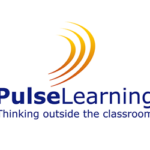
Hypertext Markup Language (HTML5) and Adobe Flash are effective technologies for creating engaging online content. However, we are beginning to see a migration from Flash to HTML5, especially in the eLearning industry. While they both currently have their advantages and disadvantages, our hunch is that HTML5 holds the aces for future-proof eLearning.
At PulseLearning we've explored 6 advantages that an HTML5 build can offer your eLearning.
1. One build, multiple devices
Learners today want access to eLearning anywhere, any time. The responsive nature of HTML5 means that a single build can run on multiple devices and this greater accessibility alone offers clients increased ROI on e-learning products. HTML5 is designed to run on any computer as well as mobile devices such as iPhones, Android devices, iPads, tablets, and smartphones, some of which cannot currently run Flash. HTML5 even has platforms such as Linux and Mac OS X covered, offering a much wider reach with your build.
2. Wave goodbye to plug-ins and players
Many content access issues for users stem from Flash player faults. A key advantage of HTML5 is its ability to render multimedia content without the installation of a plug-in or player. The value of multimedia in eLearning cannot be underestimated – the fact that HTML5 offers better media support is reason enough to explore it further.
3. Increased load speed
HTML5 runs up to 58 percent faster on Linux and Mac OS X systems than Flash. Also, with Flash not being compatible with touch screen technology, it consumes significantly more power than HTML5, causing devices to heat up.
4. Gaming generation
Gamification is one of the top e-learning trends for 2015 and beyond. HTML5 can be used to create interactive, mobile friendly games and external applications or plug-ins are not required to integrate simple graphics.
5. Embraced by favorite authoring tools
Many preferred e-learning authoring tools now publish courses to HTML5 (Articulate Storyline, Studio, Lectora, and Captivate included), removing the need for additional development costs.
6. Supports the BYOD trend
The growing number of learners owning their own mobile devices suggests that the audience for HTML5 content is here already and rapidly growing. Many workplaces are allowing employees to Bring Your Own Device (BYOD) to access eLearning content.
The verdict
Flash might still have the edge when it comes to graphical experience due to its capable rendering algorithms and built-in special effects, but it is only a matter of time before HTML5 catches up. Many clients are not yet harnessing the advantage of mobile learning; however, with HTML5 only getting better, we expect this to be a huge growth area. HTML5 definitely offers exciting prospects for the e-learning industry, so watch this space.

Hypertext Markup Language (HTML5) and Adobe Flash are effective technologies for creating engaging online content. However, we are beginning to see a migration from Flash to HTML5, especially in the eLearning industry. While they both currently have their advantages and disadvantages, our hunch is that HTML5 holds the aces for future-proof eLearning.
At PulseLearning we've explored 6 advantages that an HTML5 build can offer your eLearning.
1. One build, multiple devices
Learners today want access to eLearning anywhere, any time. The responsive nature of HTML5 means that a single build can run on multiple devices and this greater accessibility alone offers clients increased ROI on e-learning products. HTML5 is designed to run on any computer as well as mobile devices such as iPhones, Android devices, iPads, tablets, and smartphones, some of which cannot currently run Flash. HTML5 even has platforms such as Linux and Mac OS X covered, offering a much wider reach with your build.
2. Wave goodbye to plug-ins and players
Many content access issues for users stem from Flash player faults. A key advantage of HTML5 is its ability to render multimedia content without the installation of a plug-in or player. The value of multimedia in eLearning cannot be underestimated – the fact that HTML5 offers better media support is reason enough to explore it further.
3. Increased load speed
HTML5 runs up to 58 percent faster on Linux and Mac OS X systems than Flash. Also, with Flash not being compatible with touch screen technology, it consumes significantly more power than HTML5, causing devices to heat up.
4. Gaming generation
Gamification is one of the top e-learning trends for 2015 and beyond. HTML5 can be used to create interactive, mobile friendly games and external applications or plug-ins are not required to integrate simple graphics.
5. Embraced by favorite authoring tools
Many preferred e-learning authoring tools now publish courses to HTML5 (Articulate Storyline, Studio, Lectora, and Captivate included), removing the need for additional development costs.
6. Supports the BYOD trend
The growing number of learners owning their own mobile devices suggests that the audience for HTML5 content is here already and rapidly growing. Many workplaces are allowing employees to Bring Your Own Device (BYOD) to access eLearning content.
The verdict
Flash might still have the edge when it comes to graphical experience due to its capable rendering algorithms and built-in special effects, but it is only a matter of time before HTML5 catches up. Many clients are not yet harnessing the advantage of mobile learning; however, with HTML5 only getting better, we expect this to be a huge growth area. HTML5 definitely offers exciting prospects for the e-learning industry, so watch this space.








